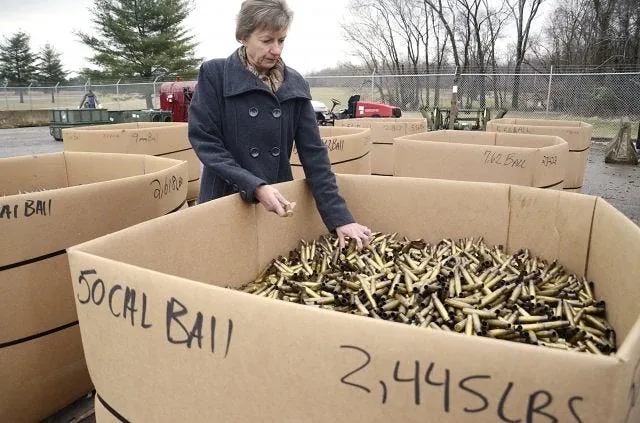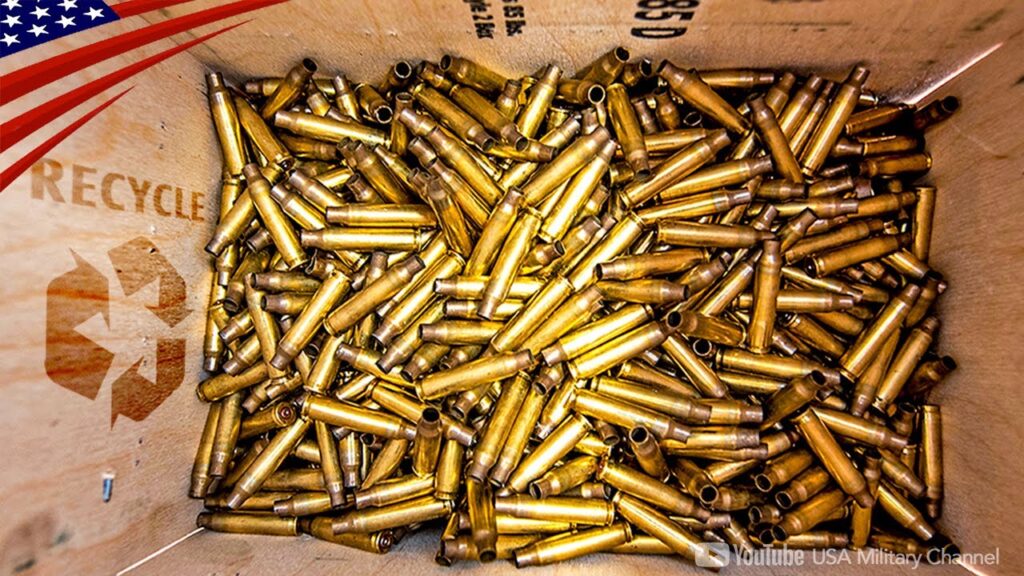Introduction to Recycling Scrap Ammo
Did you know that every year, millions of spent bullets end up in landfills? This might come as a surprise to many. Ammo isn’t just trash; it’s a resource waiting to be reclaimed. As the conversation about sustainability grows louder, recycling scrap ammo is becoming an essential topic. Not only does recycling help reduce waste, but it also allows us to tap into valuable materials that can serve various purposes.
In this blog post, we’ll dive into what happens when you recycle used bullets and why it’s so important for our planet. From understanding which types of ammunition can be recycled to exploring their environmental impact and future potential, there’s much more than meets the eye when it comes to recycling scrap ammo. Let’s get started!
The Importance of Recycling Ammo
Recycling ammo is crucial for multiple reasons. First, it helps conserve valuable resources. The metals used in bullets can be repurposed instead of mined anew, which requires significant energy and disrupts ecosystems. Recycling reduces waste in landfills. Discarded ammunition contributes to environmental pollution. By choosing to recycle scrap ammo, we minimize this impact and promote a cleaner planet.
Economic benefits also come into play. Recycling creates jobs within the materials recovery sector and supports local businesses involved in processing and reusing these materials.
There’s an educational angle. Emphasizing the importance of recycling ammunition raises awareness about responsible gun ownership and sustainable practices among shooting enthusiasts. Each step towards sustainability counts!
Types of Bullets that can be Recycled
Not all bullets can be recycled, but many types are suitable for this process. Typically, spent cartridges made of brass are the most commonly recycled. Brass is a valuable metal that retains its properties even after multiple cycles.
Lead bullets also present an opportunity for recycling. However, care must be taken due to the toxic nature of lead. Specialized processes ensure minimal environmental impact while recovering this material.
Copper-jacketed rounds are another type that can undergo recycling. The copper jackets provide additional value and can be separated from the lead core during processing.
There are also frangible and polymer-tipped projectiles that may enter the recycling stream, though their materials require specific handling procedures. Each type has its unique characteristics influencing how it’s processed post-consumption. Understanding these distinctions aids in responsible disposal practices.

The Process of Recycling Scrap Ammo
Recycling scrap ammo begins with the collection of spent casings and bullets. Once gathered, these materials are transported to specialized recycling facilities.
At the facility, technicians sort through the ammo to separate various components such as lead, brass, and copper. This sorting is crucial for maximizing reuse potential.
Next comes a thorough cleaning process. Any contaminants or residues must be removed to ensure safety during recycling. After cleaning, the different metals undergo melting processes tailored to each material’s specific properties. For instance, lead is melted down separately from brass and copper.
Once the metals have been refined into ingots or pellets, they can be repurposed into new products—everything from construction materials to jewelry can emerge from recycled ammunition components. This careful breakdown not only conserves resources but also minimizes environmental impact by reducing waste in landfills.
Environmental Impact and Benefits of Recycling Ammo
Recycling scrap ammo plays a crucial role in reducing environmental harm. When bullets are disposed of improperly, they can contaminate soil and water sources with toxic materials like lead.
By recycling, these harmful substances are removed from the environment. The process not only prevents pollution but also conserves valuable resources needed for manufacturing new ammunition. Recycling reduces the demand for raw materials. This leads to lower energy consumption and fewer emissions associated with mining and processing metals. The community benefits, too. Local economies gain jobs through the recycling industry while promoting sustainable practices that protect natural ecosystems.
Embracing recycled ammo contributes to a healthier planet while ensuring responsible use of resources. It encourages everyone involved—shooters, manufacturers, and enthusiasts—to take part in preserving our environment for future generations.
Other Uses for Recycled Bullet Material
Recycled bullet material finds a diverse range of applications beyond just traditional recycling. One prominent use is in the production of jewelry. Artisans often repurpose spent casings to create unique pieces that tell a story. Another interesting application is in construction materials. Some companies incorporate recycled metals into their products, providing strength and durability while promoting sustainability.
In the realm of art, creative individuals transform bullet shells into sculptures or decorative items. This not only showcases artistic talent but also raises awareness about responsible ammunition disposal. Some shooting ranges utilize recycled ammo components for training purposes.
This practice helps reduce waste and keeps costs manageable for enthusiasts and professionals alike. These innovative uses highlight how recycling scrap ammo can contribute positively to various industries while minimizing environmental impact.
The Future of Recycling Scrap Ammo
The future of recycling scrap ammo looks promising as awareness grows. More organizations are advocating for eco-friendly practices in shooting sports and ammunition manufacturing.
Innovative technologies are emerging to streamline the recycling process. Automated sorting machines, for instance, can separate metals with greater efficiency. This reduces waste and increases recovery rates.
Legislation is also evolving. Governments may introduce incentives for companies that prioritize sustainable approaches to ammunition disposal. Public interest in environmental issues continues to rise. Many shooters now consider the ecological impact of their hobbies more seriously than before.
As these trends develop, partnerships between manufacturers and recyclers will likely become stronger. Collaboration could lead to even higher standards in bullet production while minimizing environmental footprints. With a collective push toward sustainability, the landscape of scrap ammo recycling stands at an exciting crossroads filled with potential innovations and improvements.
Conclusion
Recycling scrap ammo is a critical process that benefits both the environment and society. By understanding how used bullets are recycled, we can appreciate the importance of this practice. The journey from spent shells to reusable materials highlights innovation in waste management.
As more people become aware of recycling options for ammunition, the industry will continue to evolve. Enhanced methods may emerge, making recycling even more efficient and accessible. Embracing these changes can lead to a sustainable future where responsible practices are prioritized.
The role of individuals in this cycle cannot be understated. Every effort counts toward reducing waste and conserving resources. By choosing to recycle scrap ammo, gun owners contribute positively to their communities and the planet’s health.
This growing awareness presents an opportunity for educational initiatives about safe disposal methods and the advantages of recycling ammo. Greater outreach could inspire others to consider their impact on the environment through simple actions like proper bullet disposal.
In time, as technology advances and environmental consciousness rises, we may see significant shifts in how society manages its metal waste—particularly with scrap ammunition. This represents not just a trend but a necessary evolution towards sustainability that all should support wholeheartedly.


